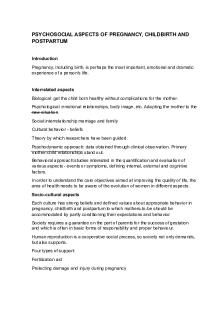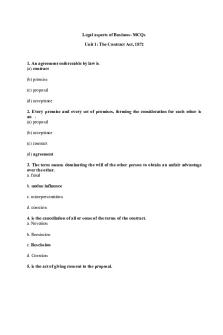On linguistics aspects of translation PDF

| Title | On linguistics aspects of translation |
|---|---|
| Author | Anna Lisa Rossi |
| Course | Traduttologia Generale |
| Institution | Università degli Studi di Napoli L'Orientale |
| Pages | 4 |
| File Size | 119.4 KB |
| File Type | |
| Total Downloads | 64 |
| Total Views | 174 |
Summary
Saggio di Jakobson...
Description
Roman Jakobson ON LINGUISTIC ASPECTS OF TRANSLATION
Roman Jakobson was a Russian–American linguist and literary theorist. He was born in Russia on 11 October 1896 to a well-to-do family of Jewish descent, the industrialist Osip Jakobson and chemist Anna Volpert Jakobson. He studied in the Lazarev Institute of Oriental Languages and then in the Historical-Philological Faculty of Moscow University, where he also was one of the leaders of Moscow Linguistic Circle. In 1920 he moved to Prague where he completed his PhD. He developed his career as a lecturer in Denmark and New York. Jakobson has been closely associated not only with formalism but also linguistics, anthropology and psychoanalysis. He is known as being the founder of the Prague Linguistic Circle. He is also known to have coined the term Structural Linguistics. He was influenced by the work of Ferdinand de Saussure, Jakobson developed, with Nikolai Trubetzkoy, techniques for the analysis of sound systems in languages. He became a pioneering figure in the adaptation of structural analysis to disciplines beyond linguistics, including anthropology and literary theory. He also made the acquaintance of many American linguists and anthropologists, such as Franz Boas, Benjamin Whorf, and Leonard Bloomfield. His first works are analysis in line with Russian Formalists. A linguistic work must be analyzed in terms of its own morphological properties. He focused on poetry (Russian-Checz) and showed tendency towards structuralism. Also he had great contribution in phonology. Jakobson's three principal ideas in linguistics play a major role in the field to this day. These are linguistic typology, markedness and linguistic universals. He is famous as a coauthor of structural analysis of language and a creator of dichotomous scale. Jakobson also initiated a complex research on the relation between poetry and language.
In his "On Linguistic Aspects of Translation" article; Roman Jakobson famously disproves Bertrand Russell’s argument that one must know a word’s reference in order to know its meaning. Bertrand Russell states "no one can understand the word 'cheese' unless he has a nonlinguistic acquaintance with cheese." However, Jakobson claims that even though you do not know or have not acquainted with the object or the signified in real life, it is possible to understand what is signified by a word. We, as people, have the ability to know and understand words without having to first see their reference. He gives the example of ambrosia and nectar which one can read in Greek myth. He sustains that any one from a cheese-less culture will understand ‘cheese’ if he is aware of the fact that it means ‘food made of pressed curds’. He goes on by referring the words ambrosia and nectar that we never consumed them but we know in what contexts they are used. Jakobson states that the meaning of any word is a linguistic feature and a semiotic fact. He also stresses the importance of the fact that, when the verbal code is excluded, a meaning of a word cannot be found only on the basis of its linguistic acquaintance. Hence the meaning itself belongs to the signifier not to the signified. ( Agata Sławińska) Jakobson describes three kinds of translation: Intra-lingual translation, or ‘rewording’: an interpretation of verbal signs by means of other signs within the same language’; (if we rephrase, summarize or rewrite a text in the same language, we would use Intra-lingual translation). Inter-lingual translation, or ‘translation proper’: an interpretation of verbal signs by means of some other languages; when you make a translation of a text from a language to another one, it is the Inter-lingual translation Inter-semiotic translation or ‘transmutation’: an interpretation of verbal signs by means of signs of non-verbal sign systems. You would use Inter-semiotic translation when you make translation of a written text having a verbal signs system into a language having non-verbal signs system, for example, music, gesture, etc. After classifying the types of translation, Jakobson discusses that there is a problem of equivalence in these three translation methods as some information can be difficult to render when a target language has different grammatical categories from the source one. However, he adds that all cognitive experiences can be expressed in language and while translating
whenever there is a lack or ‘deficiency’ of words, ‘loan words’, ‘neologisms’ and ‘circumlocutions’ can be used to fill in this lack. He gives the example of ‘cheese’ in English that is not identical to the Russian syr or to the Spanish queso and to the German Käse, etc. since the Russian ‘code-unit’ does not include the concept of cottage cheese. In Russian, that would be tvarok and not syr. While one might quibble that the English cheese only really covers the realm of cottage cheese by the addition of the pre-modifier cottage, the general principle of inter-linguistic difference between terms and semantic fields is established (Munday, 2008, 37). For the message to be ‘equivalent’ in source text and target text, the code-units will be different since they belong to two different sign systems (languages) which partition reality differently.(ex:cheese, syr) Even what for many western languages is a basic relational concept such as be (English), être (French) and sein (German) is broken down in Spanish to ser and estar, while Russian does not use such a verb explicitly in the present tense. These examples illustrate differences between languages, but they are still concepts that can be clarified in interlingually. In the final fragment of his article, the author’s focus is put on the literary translation in Slavic languages, especially poetry, and again he points to the complicated grammatical categories. According to Jakobson the choice of grammatical categories should be different for every language so it is easier to translate problematic utterances. The analysis of Russian and English also reveals that the assumption about phenomena of untranslatability of some words in literary texts is true. The only existing way of rendering poetry is creative transposition. Only poetry – where form expresses sense, where phonemic similarity is sensed as semantic relationship – is considered ‘untranslatable’ by Jakobson and requires ‘creative transposition’ (Munday, 2008, 38). As a conclusion, I find the article very interesting and useful. The author mentions the relationship between linguistics and translation, and also points out the importance of a verbal code. The examples are really clear to explain the topic. Moreover, Jakobson was a good literary theorist so he could give useful information about linguistics in the context of translating literary forms, as for example poetry.
REFERENCES Munday, J. (2008). Introcuding Translation Studies. London and New York: Routledge. pg:37-38. Rıfat, M. (2012). Çeviri Seçkisi II - Çeviri(bilim) Nedir?. Sel Yayıncilik. İstanbul. pg:61-66. Sławińska, A.
Venuti, L (ed) (2000). The Translation Studies Reader. London and New York. Routledge. pg:113-118. http://tran5100ani.blogspot.com.tr/2013/01/thoughts-on-linguistics-aspects-of.html http://www.unesco.uj.edu.pl/documents/2205554/33980917/JAKOBSON,%20ROMAN.pdf...
Similar Free PDFs

Legal Aspects of Nursing
- 5 Pages

Behavioural Aspects of Budgeting
- 7 Pages

Psychosocial Aspects OF Pregnancy
- 19 Pages

Schools of Linguistics
- 281 Pages

Branches of Linguistics
- 22 Pages

Method of translation
- 11 Pages

MCQ - Legal Aspects of Business
- 25 Pages

Nine Aspects of Beliefs Summary
- 2 Pages
Popular Institutions
- Tinajero National High School - Annex
- Politeknik Caltex Riau
- Yokohama City University
- SGT University
- University of Al-Qadisiyah
- Divine Word College of Vigan
- Techniek College Rotterdam
- Universidade de Santiago
- Universiti Teknologi MARA Cawangan Johor Kampus Pasir Gudang
- Poltekkes Kemenkes Yogyakarta
- Baguio City National High School
- Colegio san marcos
- preparatoria uno
- Centro de Bachillerato Tecnológico Industrial y de Servicios No. 107
- Dalian Maritime University
- Quang Trung Secondary School
- Colegio Tecnológico en Informática
- Corporación Regional de Educación Superior
- Grupo CEDVA
- Dar Al Uloom University
- Centro de Estudios Preuniversitarios de la Universidad Nacional de Ingeniería
- 上智大学
- Aakash International School, Nuna Majara
- San Felipe Neri Catholic School
- Kang Chiao International School - New Taipei City
- Misamis Occidental National High School
- Institución Educativa Escuela Normal Juan Ladrilleros
- Kolehiyo ng Pantukan
- Batanes State College
- Instituto Continental
- Sekolah Menengah Kejuruan Kesehatan Kaltara (Tarakan)
- Colegio de La Inmaculada Concepcion - Cebu







